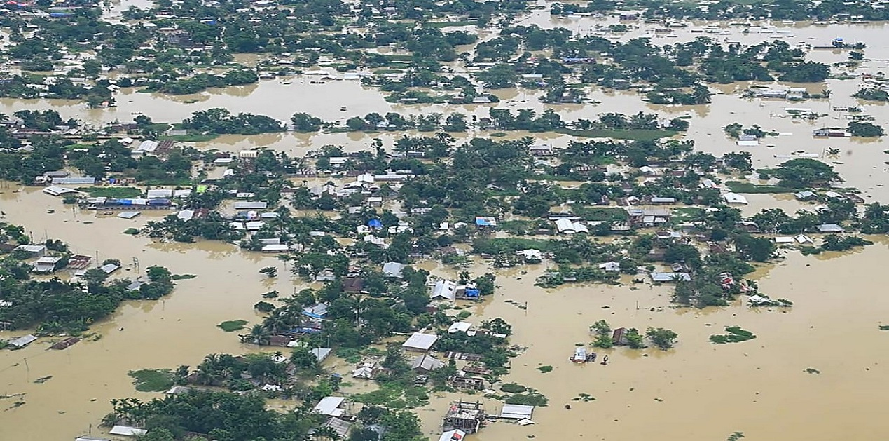
Assam, a northeastern state in India, is no stranger to natural disasters, particularly floods, which have become more frequent and intense in recent years. The state’s vulnerability to flooding, coupled with climate change, has exacerbated its ongoing drinking water crisis. Floods in Assam have not only caused widespread destruction but have also worsened the accessibility and quality of drinking water for millions of residents. This article examines the impact of floods on Assam’s water supply and the role of climate change in aggravating the drinking water crisis.
The Role of Floods in Assam's Drinking Water Crisis
Assam is situated in a flood-prone region, with the Brahmaputra River and its tributaries running through the state. During the monsoon season, which lasts from June to September, heavy rainfall causes the river to overflow, inundating large parts of the state. In recent years, however, the intensity and frequency of these floods have increased, largely due to changing climate patterns. These floods not only devastate infrastructure and homes but also contaminate drinking water sources, making access to safe and clean water a significant challenge.
Floodwaters often inundate wells, tube wells, and groundwater sources, mixing with sewage and industrial waste. As a result, the water becomes unsafe for consumption, leading to an increase in waterborne diseases such as diarrhea, dysentery, and cholera. The spread of such diseases during and after floods puts immense pressure on healthcare systems already struggling with limited resources. In rural areas, where access to clean water was already limited, the floods exacerbate the situation, leaving people without a safe drinking water supply for weeks or even months.
The Impact of Climate Change on Flooding
The connection between climate change and the increasing frequency and severity of floods in Assam cannot be ignored. Rising global temperatures have led to erratic rainfall patterns, including more intense monsoons and unpredictable weather conditions. These changes result in faster snowmelt in the Himalayan region, contributing to the rapid swelling of rivers like the Brahmaputra. Additionally, the construction of dams and the depletion of wetlands have altered the natural flow of rivers, further increasing the flood risks.
As climate change continues to intensify, floods in Assam are expected to become even more severe, impacting the state’s water resources. These extreme weather events are creating a vicious cycle where floods contaminate drinking water, leading to water shortages, which in turn increase reliance on unsafe water sources.
The Strain on Water Supply Infrastructure
Assam’s water supply infrastructure is ill-equipped to handle the dual challenges of flooding and climate change. The existing infrastructure, such as water treatment plants and distribution networks, is often damaged or destroyed during floods. In many cases, these plants are unable to provide sufficient clean water after a flood disaster due to the contamination of nearby water sources. This highlights the need for better preparedness and resilience in water supply systems, especially in flood-prone areas.
Moreover, the problem is more pronounced in rural areas where access to piped water systems is limited. During floods, these regions rely on rainwater harvesting or local water bodies, both of which are susceptible to contamination. The lack of alternative water sources compounds the drinking water crisis, leaving communities at high risk for waterborne diseases.
Conclusion
The floods in Assam provide a clear case study of the intersection between climate change and water security. The increasing intensity and frequency of floods due to climate change are exacerbating the state’s drinking water crisis, particularly in rural and flood-prone areas. To address these challenges, there is an urgent need for investment in resilient water supply infrastructure, improved flood management strategies, and climate adaptation measures. Ensuring access to clean drinking water in Assam will require a coordinated effort between government agencies, local communities, and environmental organizations to build a sustainable and disaster-resilient water supply system that can withstand the impacts of a changing climate.


